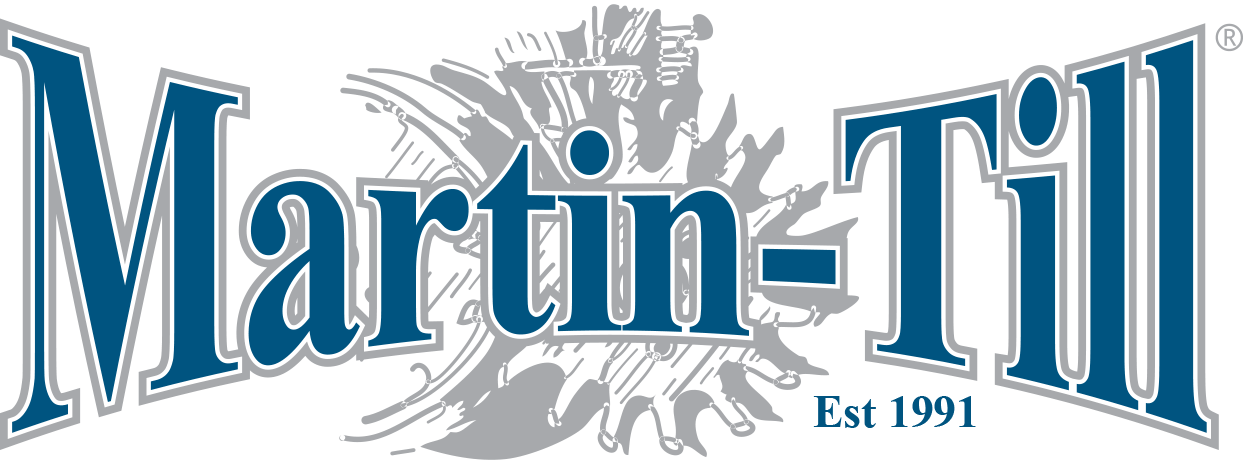On this episode of Conservation Ag Update, brought to you by Martin-Till, managing editor Michaela Paukner takes us inside the CTIC Conservation in Action Tour in northeast Arkansas, where she quickly learns that conservation ag means more than just no-till in the region. Local farmer Ryan Sullivan explains why he’s struggled to make no-till a profitable practice in his operation. We also hear from northeast Wisconsin no-tiller Andy Benson who shares his biggest takeaways from the tour.
Later in the episode, East Troy, Wis., no-tiller Jim Stute gives local growers a crash course on planting green during a field day.
In the Cover Crop Connection, associate editor Mackane Vogel checks in from the East Coast with a look at Steve Groff’s roller crimper.
Plus, University of Kansas professor Jim Bever chats with Dan Crummett about a recent study showing the impact of diverse row crop rotations on soil-borne pathogens. And finally, in our Video of the Week, the Reddick family explains why they took a “small ball” approach to cover cropping when they went all in on no-till and cover crops a few years ago.
This episode of Conservation Ag Update is brought to you by Martin-Till.
Our customers believe that Martin-Till®️ products provide an excellent return on their investment. We know this because a large percentage of them are repeat customers since the beginning in 1991. Our planter attachments help make it possible to plant into higher levels of residue and moisture. Higher levels of mulch means less erosion, improved soil tilth and fertility, which can reduce production costs.
Martin-Till’s goal is to increase yields and save you time and money. We hope you find something from our product offerings of row cleaner, UMO’s, closing wheels systems and recently added concaves that will make this year’s planting & harvesting go better for you. After all, you deserve the best!
TRANSCRIPT
Jump to a section or scroll for the full episode...
- Conservation in Action Tour Journeys Through Arkansas
- Weatherproofing Your No-Till Farm
- No-Till Legend Steve Groff’s Original Roller Crimper
- Kansas Study: More Crop Diversity, Less Harmful Microbes
- Playing “Small Ball” with No-Till & Cover Crops
Conservation in Action Tour Journeys Through Arkansas
During the Conservation in Action Tour, 125 farmers, educators and stakeholders saw first-hand that conservation ag means more than just no-till in northeast Arkansas.
The importance of water management was on full display as attendees toured Scott Matthews’ farm.
He precision levels his rice fields and uses this long plastic tube with holes to flood those rice fields. Managing editor Michaela Paukner caught up with another farmer who struggles to make no-till work in the region, and she also spoke with a tourgoer from Wisconsin for his biggest eye-opener on the trip.
“In our heavy clay soils here, with our levy system, it doesn’t allow us to rotate seamlessly into soybeans for irrigated, so with this row rice system, it opens that door. We have done a lot of no-till over the last several years behind rice, but what we found in our operation and our soil type — from 8-10 years of trying it — over the years it’s not as profitable without some kind of program to incentivize it. It is doable, we can make a crop that way, but without a program to incentivize no-till or cove crops, it’s not the most profitable for our operation.”
– Ryan Sullivan, Farmer, Northeast Arkansas
“Those people involved in rice production have a real difficult time finding ways for cover crops to benefit them. Part of it’s the geography and soil type, and part of it’s just the growing season as it relates to rice production. They don’t have a lot of opportunities. I’m very confident that if they can find the right species to utilize, they can still benefit from some of those soil quality benefits from cover crops. However, when they have to flood their rice paddies, it really limits their choices. There are very few species that can live under water.”
– Andy Bensend, No-Tiller/Strip-Tiller, Northwest Wisconsin
Arkansas produces nearly 50% of U.S. rice, and as Michaela found out on the tour, growing rice isn’t conducive to many of those core conservation practices that we’re familiar with in the Corn Belt.
Weatherproofing Your No-Till Farm
Jim Stute has been tracking weather data for 30 years on his farm in East Troy, Wis. He says he’s seen the 2 wettest years, the 2 driest years and 3 consecutive years of early and midseason drought, all within the past 6 years!
Sounds like a perfect opportunity to discuss ways to weatherproof your farm, which was the theme of this field day hosted by Stute last week. Local farmers interested in learning more about conservation practices got a crash course on planting green.
“Planting green is planting into the standing crop and then terminating when appropriate. That’s based on soil moisture. The beautiful thing about that green, rooted vegetation is it keeps all the alliances bolted on our planters to help us no-till. So, we’ve got the residue management system up front, the closing wheels back. It keeps the soil from building up, even if the soil is a little tacky on the front. In conventional no-till, that’s something we need to be concerned about, and one of the pitfalls of early equipment was the buildup of the soil.”
No-Till Legend Steve Groff’s Original Roller Crimper
As you can see we are at the birthplace of the tillage radish, yes I am on Steve Groff’s farm in Holtwood, Pennsylvania and speaking of which, we’re going to toss it off to Steve right now for some cover crop action.
“So in 1995 I was at the National No-Till Conference and heard Franke Dijkstra from Brazil talk about how he was rolling cover crops. I had heard about him before so I was really excited to meet him at the conference that year. I was able to talk to him and I came home from the No-Till Conference and I literally had barrels set up. I was going to weld angle irons on them and I was going to put rods through and fill them with concrete, because that was some of the ways that I had seen some of the pictures they had done in Brazil. ”
“And I literally was starting to do that, starting to manufacture and make that and everything and then I happened to see in a farm magazine that there was a device called a rolling stalk chopper made by Buffalo out of Nebraska that was designed to go in the spring in corn stalks and chew up the corn stalks a little bit, fluff up the soil — kind of like what we know as vertical tillage today but not with discs, more with these blades. And I thought to myself, that might be a way that we could use to roll the cover crops. Because you have this crimping action here and so I called the company up and they said ‘well, that’s an interesting idea. We’ve never shipped any of these things east of the Mississippi before but we do have a dealer from some of our other equipment in your area.’ ”
“So, long story short, they said ‘we’ll ship it east and if you like it you can buy it. If you don’t like it, ship it back.’ Fair enough. So I got it here, and when it came stock, everything was mounted directly on the bottom of this 7x7 frame but I made 2 rounds with my cover crops and I called them up and said I’m going to buy it. So I was convinced immediately. And I was going into rye that was 3 or 4 feet tall at that time. And so we bought it. But, we had problems…”
To hear the full story of Steve Groff's roller crimper origin story, visit CoverCropStrategies.com. From Cedar Meadow Farm in Holtwood, Pennsylvania, that’s all for this week’s Cover Crop Connection.
Kansas Study: More Crop Diversity, Less Harmful Microbes
A recent University of Kansas study adds some empirical evidence to the wisdom of crop rotations, showing that diverse row crops in rotation help keep soil-borne pathogens under control. Jim Bever was the lead scientist on the project and shares some takeaways with our Dan Crummett.
CRUMMETT: “What seems to be going on in the root zone of crops planted for biodiversity vs. those in a mono crop culture?
BEVER: “Plant roots interact with thousands of microbes — some are beneficial and some are pathogenic. In monocultures, pathogens accumulate that consume that plant and the net effect tilts negative. This is because the crop is dealing with the pathogens that accumulate on its own roots as well as getting pathogens from its neighbor. In polycultures, the neighboring plant is a different species, and the crop is likely to be immune to the pathogens from its neighbor, while it's still benefiting from the beneficial microbes, so the net effect is positive.”
Check out Dan’s in-depth article about the study on No-TillFarmer.com.
Playing “Small Ball” with No-Till & Cover Crops
Time now for our Video of the Week. This one comes to us from Carlisle County, Ky. Brad Reddick reflects on his switch to no-till, and his son Joel explains why they’re playing small ball with cover crops.
“In 2018, we did a total about-face with our farming practices. The first step for us was going from no-till farming to cover crop farming. We put a lot of emphasis on the cover crop, and it’s essentially as important as the cash crop.”
– Brad Reddick, No-Tiller, Carlisle County, Ky.
“A lot of people like home runs, but there’s more than one way to win at baseball. We prefer a base hit strategy, and the cover crops, and our overall management system, allow us to get base hits more often, and ultimately that gets more wins for us financially, helps our land, so it’s very important for us to have that base hit mentality, rather than a home run mentality.”
– Joel Reddick, No-Tiller, Carlisle County, Ky.
The Reddick family received the Leopold Conservation Award in 2022 for their conservation efforts.
That will wrap things up. Have an interesting photo or video from your farm? Or a story you’d like us to feature on the broadcast? Send me an email at Nnewman@lesspub.com.
And that will wrap things up this edition of Conservation Ag Update. Until next time, for more stories visit no-illfarmer.com, striptillfarmer.com and covercropstrategies.com. Thanks for stopping by. Have a great day!








